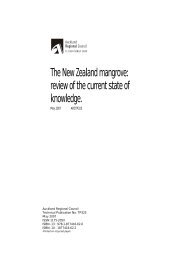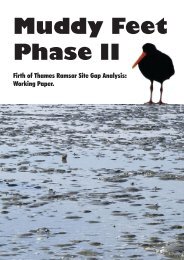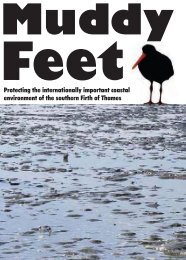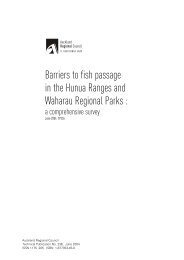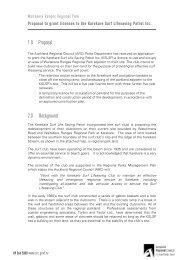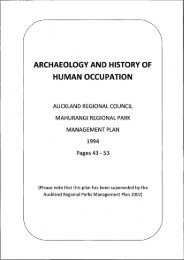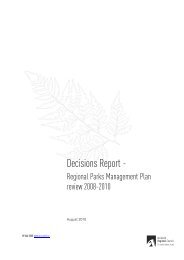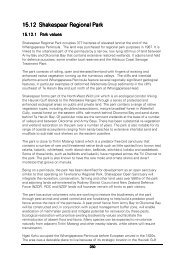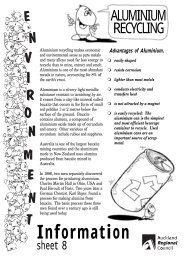MUDDY FEET - Auckland Regional Council
MUDDY FEET - Auckland Regional Council
MUDDY FEET - Auckland Regional Council
You also want an ePaper? Increase the reach of your titles
YUMPU automatically turns print PDFs into web optimized ePapers that Google loves.
2<br />
• Establishment of nature reserves in wetlands, and promotion of training in the fields of<br />
wetland research and management.<br />
• Consultation with other Contracting Parties about implementation of the Convention.<br />
The first Oceania regional meeting of the Ramsar Convention was held in Hamilton, New<br />
Zealand in December 1998. New Zealand has designated five wetlands for inclusion in the<br />
List of Wetlands of International Importance, three of which are in the Waikato Region.<br />
Chronologically, from date of designation, these are:<br />
• Farewell Spit and the Waituna Wetland (both August 1976) – South Island<br />
• Whangamarino and Kopuatai Peat Dome (both December 1989) – Waikato<br />
• Firth of Thames (January 1990) – a short distance NE of Whangamarino and Kopuatai<br />
The April 2001 report from the Auditor General of New Zealand on Meeting International<br />
Environmental Obligations points to some weaknesses in our wetlands standards, citing the<br />
“…. lack of a coherent national policy framework on wetlands.” and, “There is also evidence<br />
that wetland degradation in New Zealand is worse than it ought to have been. To an extent<br />
this may have been inevitable. But it is probable that the cause lies, in part, in the lack of<br />
guidance – both in legislative and policy terms – on where the balance should lie between<br />
development and wetland protection. We believe the variability and differing values of<br />
wetlands lead directly to difficulties in application and implementation of the Ramsar<br />
Convention. And these difficulties reinforce the need to develop a national wetlands planning<br />
framework to set priorities, targets, standards, and so on within an agreed understanding of<br />
the Convention obligation of as far as possible the wise use of wetlands.”<br />
1.3 General Description of the Firth of Thames<br />
The Firth of Thames, or Tikapa Moana, is a shallow marine embayment, which lies in the<br />
northern part of the Hauraki Rift, bounded by fault lines along the Hunua and Coromandel<br />
ranges (see 1.6). The Firth’s northern boundary, merging into the greater Hauraki Gulf, is<br />
situated due east of <strong>Auckland</strong>, running from Thumb Point (NE Waiheke Island) to<br />
Coromandel Harbour, approximately following the line of 36º44' S latitude, between 175º11'<br />
and 175º31' E longitude (Figure 1-1). The Firth is between eleven and fourteen nautical miles<br />
wide and reaches a maximum depth of 35 metres near its northern limits. About 95% of the<br />
Firth is less than 30 metres deep.<br />
The Firth of Thames is the primary receiving environment for the ~3600 km 2 Hauraki<br />
Catchment. The inner half of the Firth (south of a line drawn between Tararu in the east and<br />
Kaiaua in the west) is very shallow (Figure 8-1), with a maximum depth of five metres<br />
(mainly in the middle) at mean low water spring tides (MLWS). For nearly all of the coastal<br />
area covered by the Ramsar designation, the intertidal zone is between one and two<br />
kilometres wide, with no more than a 1.5m change in altitude between its inner and outer<br />
margins.<br />
EcoQuest Education Foundation EQRS/1 12/04



